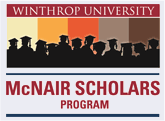Mentor
Jeannie Haubert, Ph.D.
Major
Special Education
College
College of Education
Department
Counseling, Leadership, and Educational Studies
Abstract
In this comparative study, the discussion of multicultural education focused on these four research questions: “What is multicultural education?,” “How are teaching preparation programs approaching multicultural education?,” “What does multicultural education look like in the classroom?,” and “Is multicultural education an explicit portion of teacher preparation programs for pre-service teachers in South Carolina?” Using James A. Banks’s five dimensions of multicultural education as the theoretical framework for the study, the following dimensions were explored to see if they were present within teacher preparation programs: content integration, knowledge construction, equity pedagogy, prejudice reduction, and empowering school culture and social structure. Interviews were conducted with faculty members, who met the following criteria: (1) a research interest in multicultural education, (2) experience with teaching a course for multicultural education or a related course about diversity, and (3) are teaching at a university or college with a Teaching Fellow Program in South Carolina. Along with interviews, an analysis of literature addressing the research questions was conducted. The results from the research were the following: Content integration, knowledge construction, and prejudice reduction were present within teacher preparation programs through required literature, writing assignments, and conversations that were structured into the syllabus to challenge the ideas and opinions that they brought into the classroom. Equity pedagogy and empowering a school culture and social structure were not present within teacher preparation programs. The implication for this research is that we must go beyond the common rhetoric of “inclusivity and multicultural understanding” because the classroom is not a utopia. It does not exist in its own world; it is a smaller environment that children grow, learn, and develop in preparation for a much larger environment—the world. Students need to learn how to engage in a healthy dialogue about those issues and learn how to dismantle the –isms that have been embedded within social policy, the judicial system, employment, and other pathways to access. A way to achieve this is that universities and colleges do not need to increase courses, but enrich those courses. By taking a closer look at the essential readings of offered courses, writing assignments, discussions, and service learning opportunities, a deeper analysis can be added to see if different races, ethnicities, religions, genders, nations, and sexual orientations are represented within the curriculum.
Recommended Citation
Causey, Ashley Renee and Haubert, Jeannie
(2016)
"Incorporating Multicultural Education into Teacher Preparation Programs,"
The Winthrop McNair Research Bulletin: Vol. 2, Article 3.
Available at:
https://digitalcommons.winthrop.edu/wmrb/vol2/iss1/3
Included in
Curriculum and Instruction Commons, Curriculum and Social Inquiry Commons, Educational Methods Commons, Educational Psychology Commons


